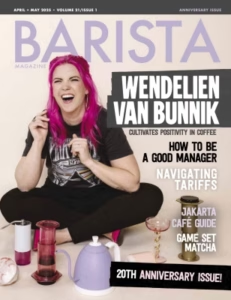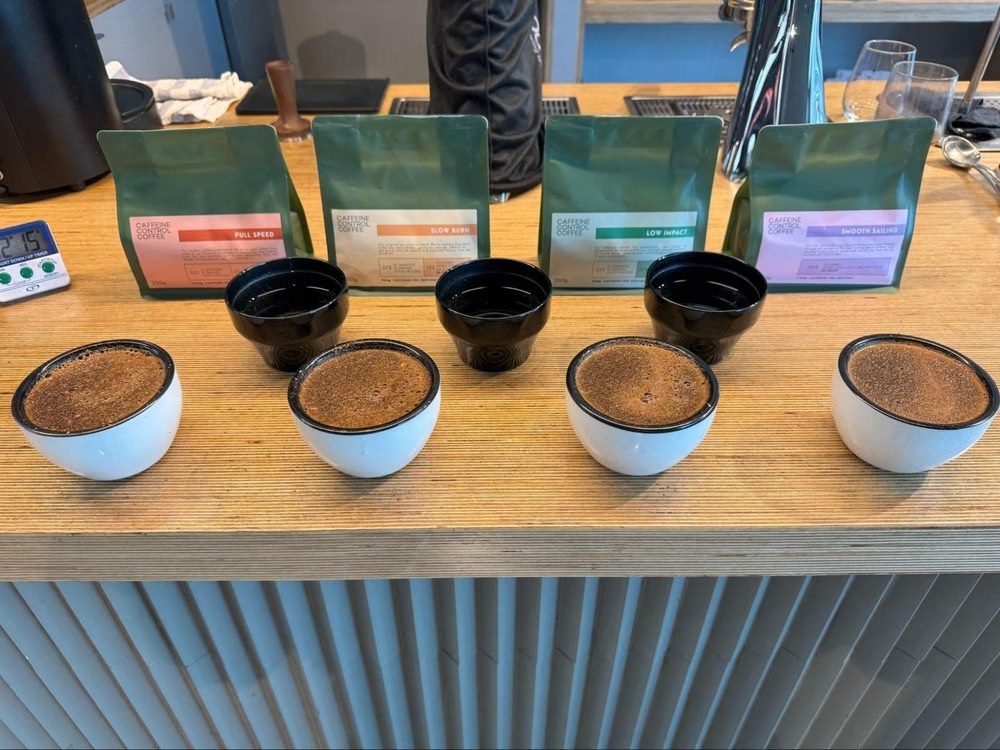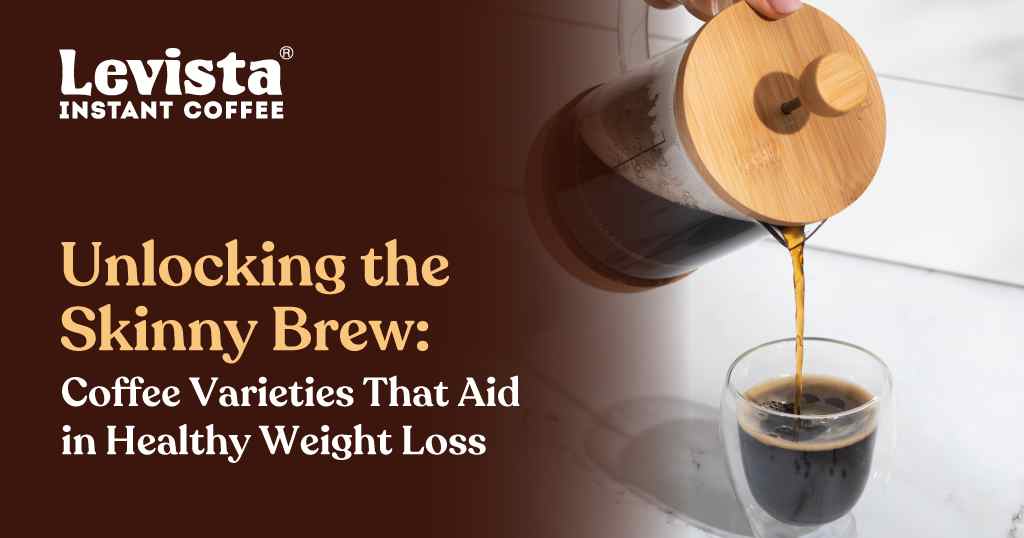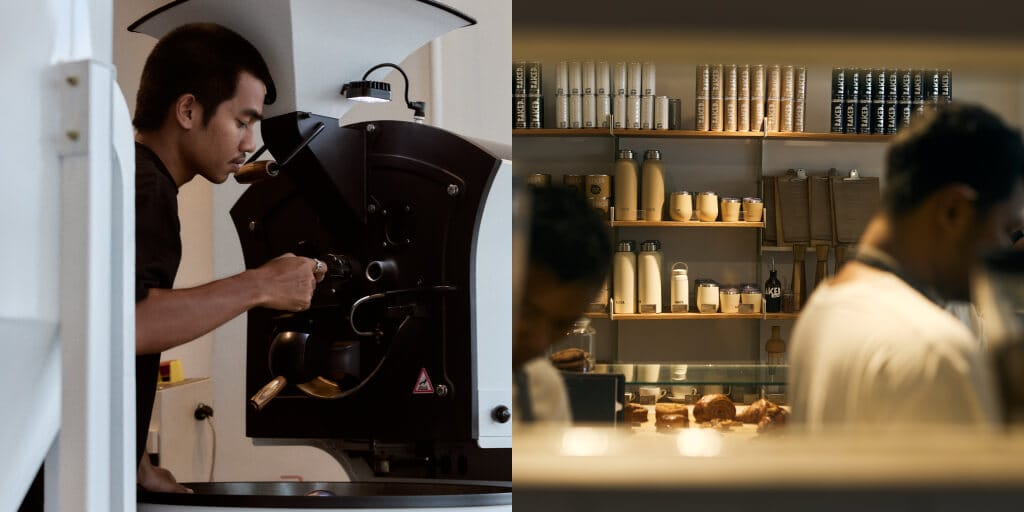After experiencing the negative effects of high caffeine intake, Pete and Maria Licata sought to create a solution. Cue their latest venture: Caffeine Control.
BY VASILEIA FANARIOTI
SENIOR ONLINE CORRESPONDENT
Photos courtesy of Pete Licata
When 2013 World Barista Champion Pete Licata began feeling the persistent effects of burnout—restless sleep, midday crashes, and a creeping sense of fatigue despite a healthy lifestyle—he didn’t immediately suspect coffee.
“Despite a decent diet and exercise, I still slept poorly, woke feeling unrested … just sort of worn down and constantly out of energy,” he says. As he began to question his caffeine habits, he found a surprising lack of resources available to coffee drinkers seeking clarity around caffeine content.
That personal revelation became the foundation of Caffeine Control Coffee, a new brand focused not just on flavor, but on functional transparency. Together with his wife, seasoned barista and competitor Maria Licata, Pete launched the company to fill what they saw as a critical gap in specialty coffee: informed choice around caffeine.

What They Offer
The Melbourne, Australia-based brand debuts with four blends: Full Speed (fully caffeinated), Slow Burn (moderate caffeine), Low Impact (low caffeine), and Smooth Sailing (decaf). Each is designed to give drinkers a clear idea of what they’re consuming and help manage caffeine intake with intention.
“We’ve all had days where caffeine makes us feel great—and days where it doesn’t,” Pete explains. “Caffeine Control Coffee is about putting that power into the hands of the drinker.”
The idea is simple but novel in the specialty sector: apply the same level of care and traceability used in sourcing and roasting, but toward caffeine content. Each blend is tested for its specific caffeine level, and adjustments are made whenever a new lot is introduced. For a field that rarely quantifies caffeine beyond broad assumptions, this marks a shift.

A New Kind of Blend
Rather than expecting consumers to cut out coffee entirely when managing caffeine, Pete and Maria have focused on making it easier to continue daily rituals—with modifications. That’s where the brand’s unique blends of regular and decaf beans come in.
“There are few, if any, things that can replace the satisfaction of a good cup of coffee,” says Pete. “Other products like tea or protein shakes can become a replacement, but it always feels like a sacrifice. We’ve thought about this brand as a solution. You might know you need to cut back on caffeine, and we’re here to help bring clarity so you can actually do it easily.”
Maria adds that the blends are practical too—especially during her pregnancy. “I’m the biggest drinker of our Low Impact blend! I haven’t had to give up my normal coffee routine in the morning, which makes me feel like I get to live just a bit more normally right now.”


Not Just Decaf—Defined Caffeine
The challenge, they admit, lies in delivering both accuracy and flavor. “Creating our standards for how much coffee should be in a serving, testing caffeine levels, and communicating why what we do is helpful for people—that’s been the hard part,” Pete says.
They’ve chosen to avoid percentage-based labels like 50% or 25% caffeine, which, without a baseline, can be misleading. Instead, blends are labeled with approximate milligrams per serving, within a range of ±5 milligrams. According to Pete, this approach is “clearer, and ultimately more useful for people making daily decisions.”


Industry Reception
While one might expect skepticism, the response from within the coffee industry has been largely positive. “I think many others have been through similar experiences to myself,” Pete says. “Our approach—focusing on caffeine and how to control it, rather than eliminate it or ignore it—makes sense.”
Still, he acknowledges a broader knowledge gap. “We consider ourselves experts on all things coffee, but if asked how much caffeine is in a cup, or what the recommended intake is, most of us don’t know. We have a whole other avenue of expertise we can explore and offer to the world.”
For Pete and Maria, this isn’t about demonizing caffeine; it’s about understanding it. Their long-term mission involves improving industry awareness and enabling baristas and consumers alike to make informed choices. “We should be able to give data, recommend options depending on need, and have confidence in low-caff or decaf offerings,” Pete says.


Direct to Drinkers, For Now
At launch, Caffeine Control is focusing on direct-to-consumer sales through its website. The decision is partly strategic, and partly philosophical. “We’re self-funded,” Pete explains, “(and) we feel that since we are providing a solution to the individual, an online shop would be the best starting point.”
That said, they’re open to exploring café partnerships where demand exists. “More and more people make coffee at home as well,” Maria notes, “and it just makes sense to meet customers where they already are.”


Looking Ahead
So where do they hope to take this idea? Pete is cautious about specifics but clear about ambition. “Whether it means people only come to us for knowledge about how to adjust their caffeine intake, or that we have a product in every market, we have big goals,” he says.
In five years, they hope to build a thriving team, forge direct relationships with coffee producers, and establish a culture that includes caffeine data as a core part of coffee expertise. “We want to help people struggling with caffeine,” Pete says. “And we think there are people who could benefit nearly everywhere.”
ABOUT THE AUTHOR
Vasileia Fanarioti (she/her) is a senior online correspondent for Barista Magazine and a freelance copywriter and editor with a primary focus on the coffee niche. She has also been a volunteer copywriter for the I’M NOT A BARISTA NPO, providing content to help educate people about baristas and their work.


Subscribe and More!
As always, you can read Barista Magazine in paper or digital format. Subscribe here to get your own hardcopy of each issue delivered. Read the April + May 2025 issue for free with our digital edition.
And for more than three years’ worth of issues, visit our digital edition archives here.
Escape from it all while still enjoying the comforts of home. Discover Expedia's array of vacation rental options—from cozy city apartments to picturesque beachfront villas.
Source link



